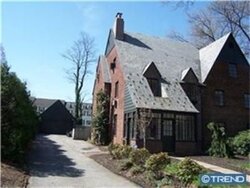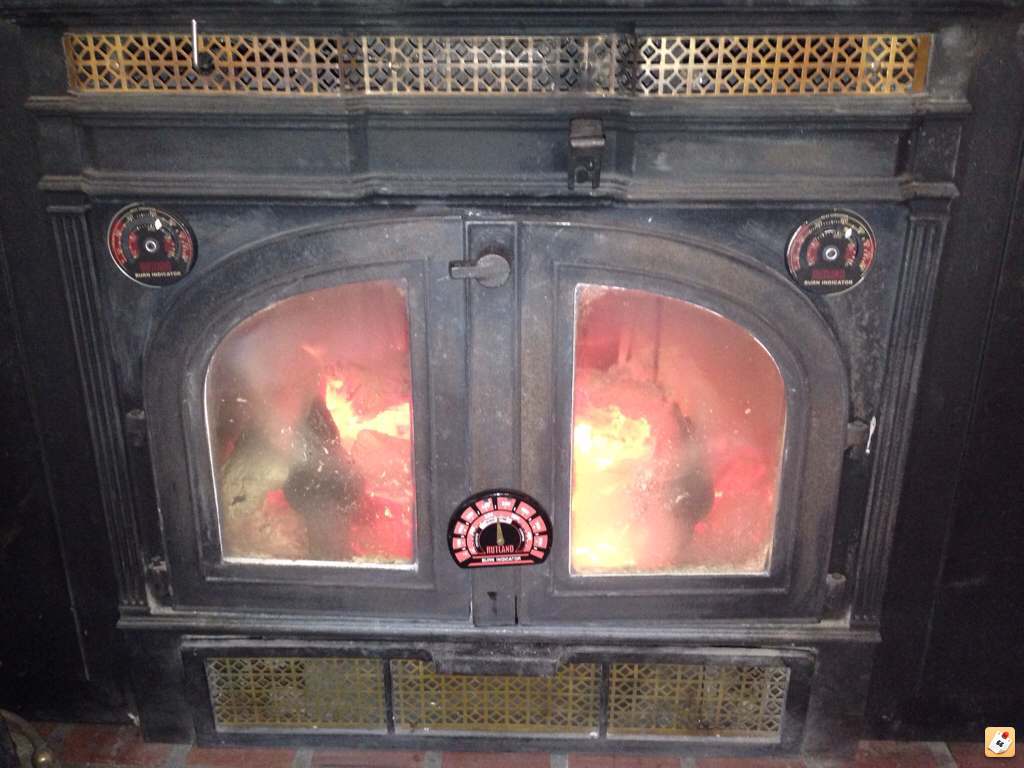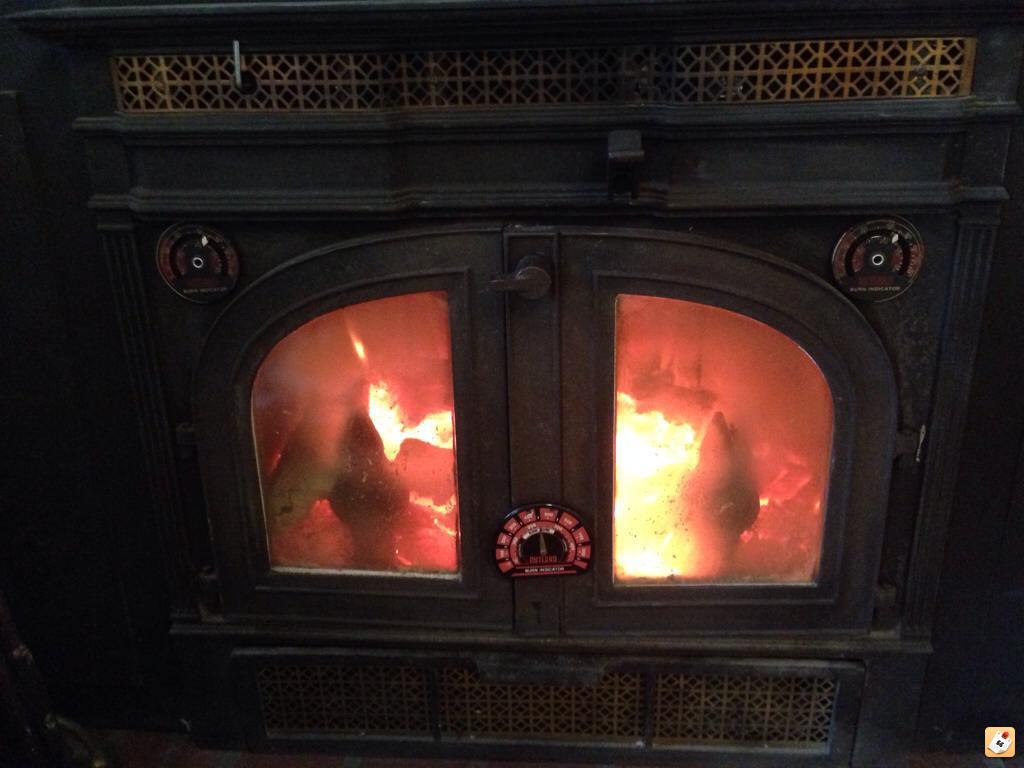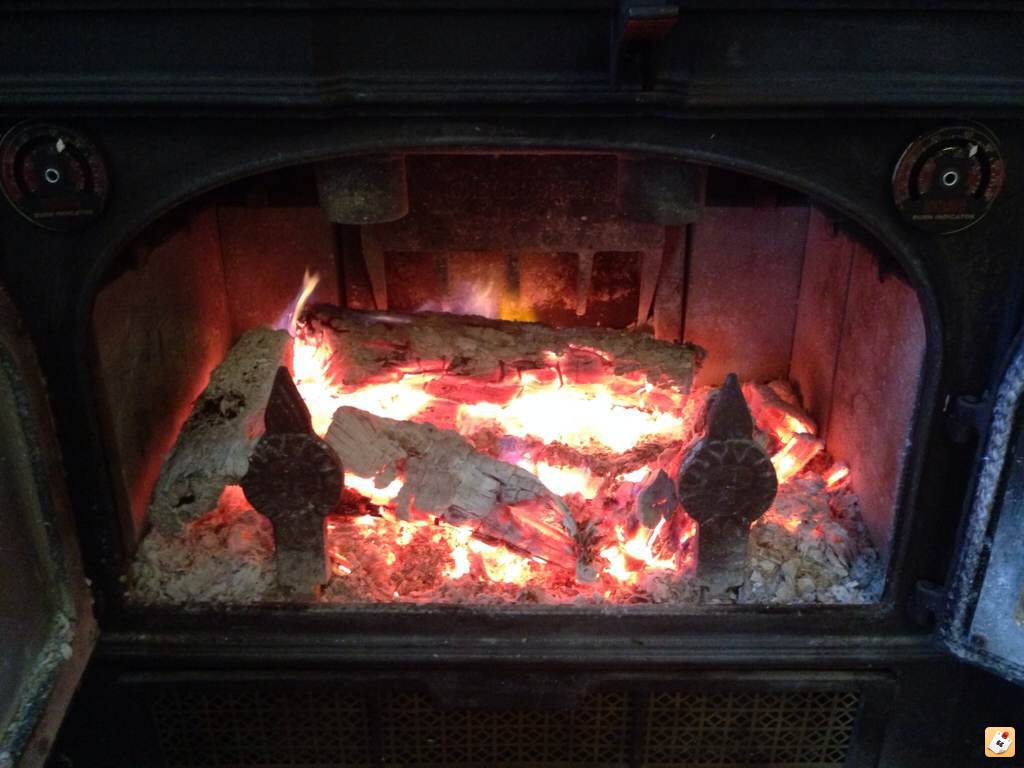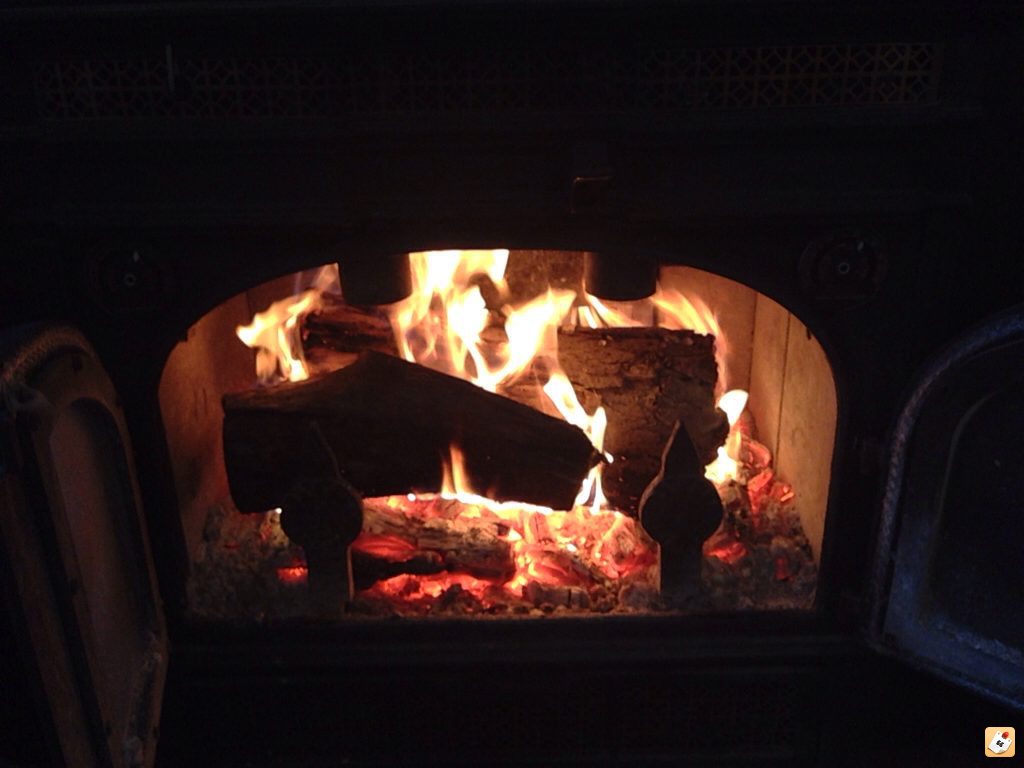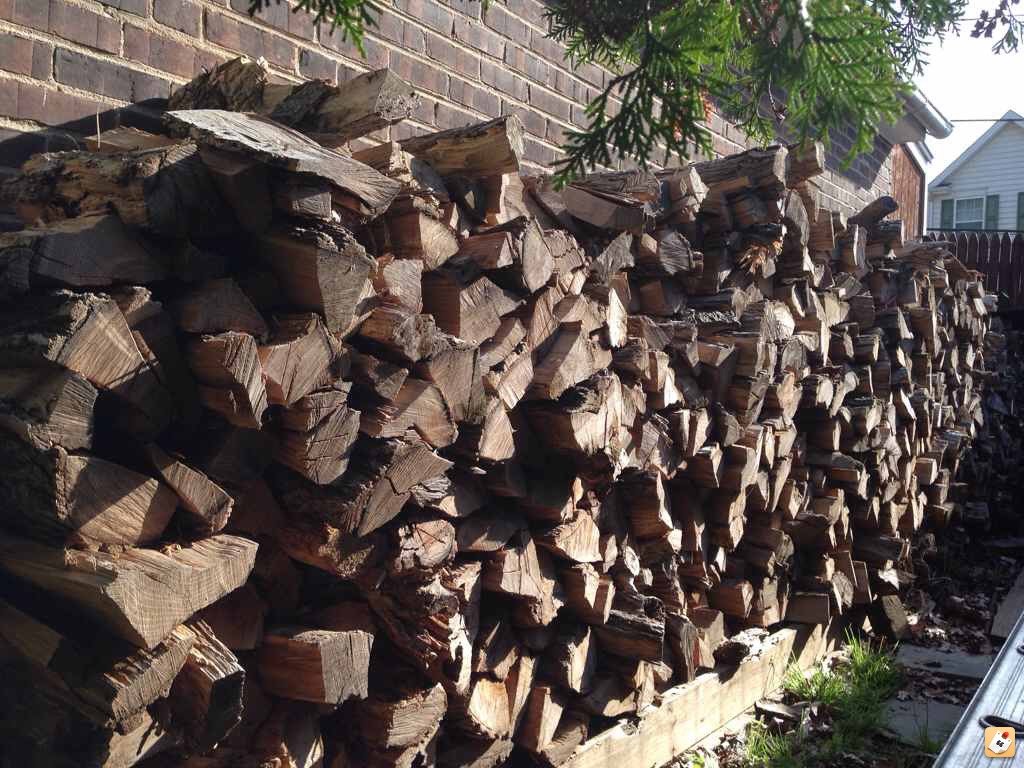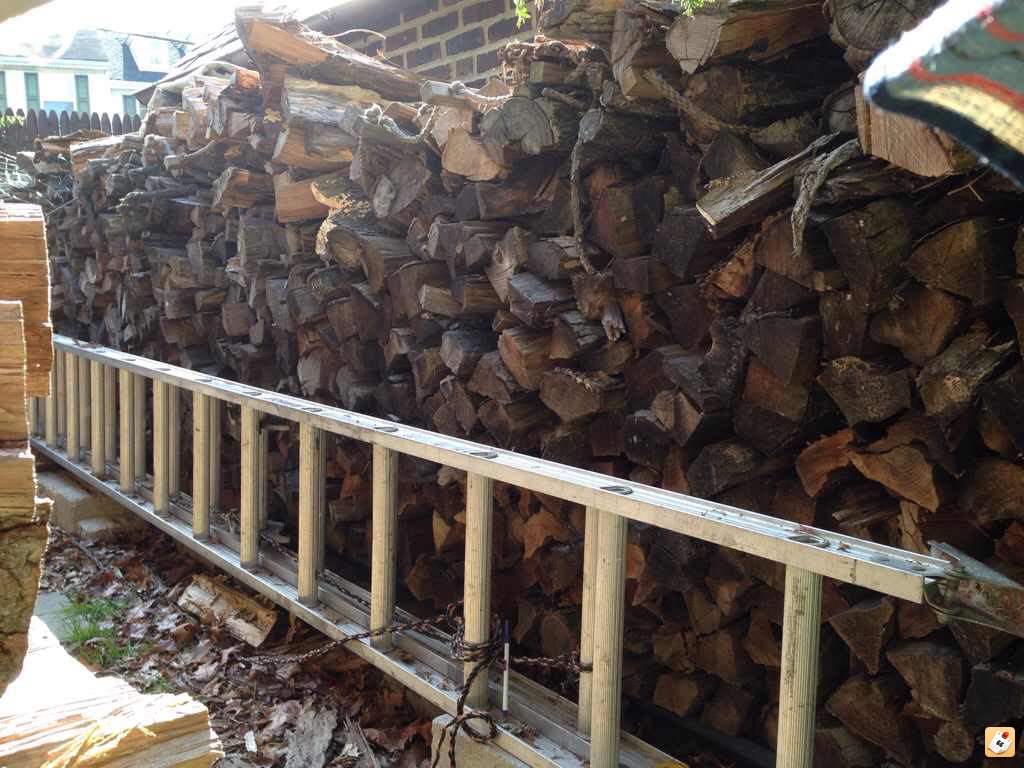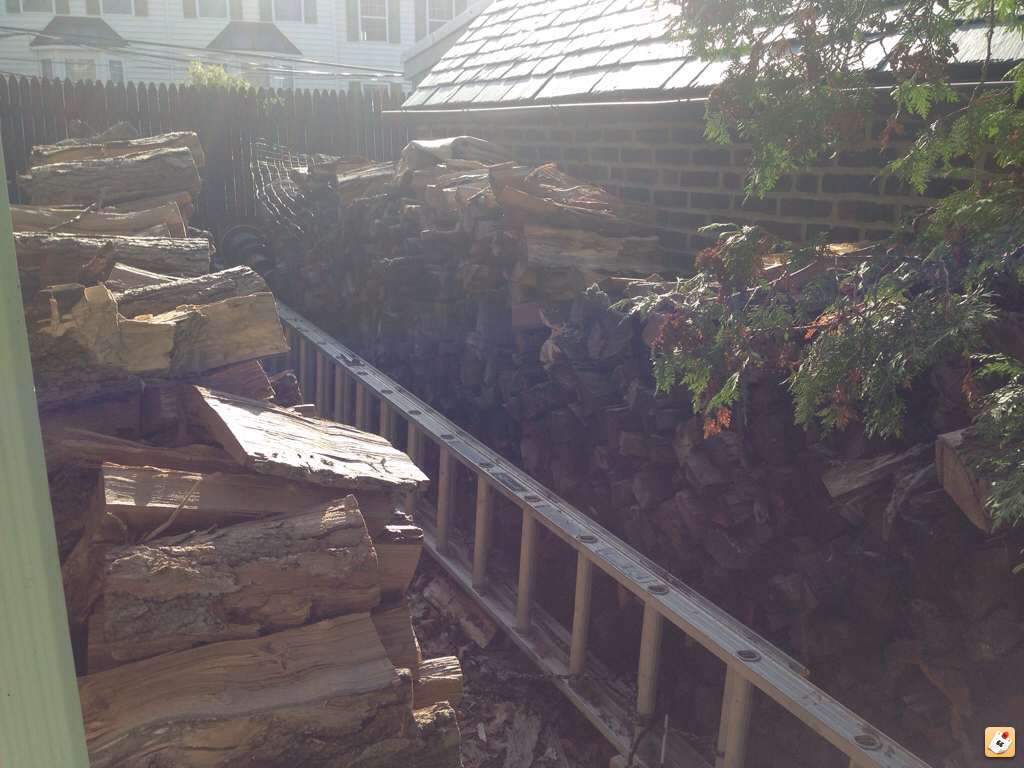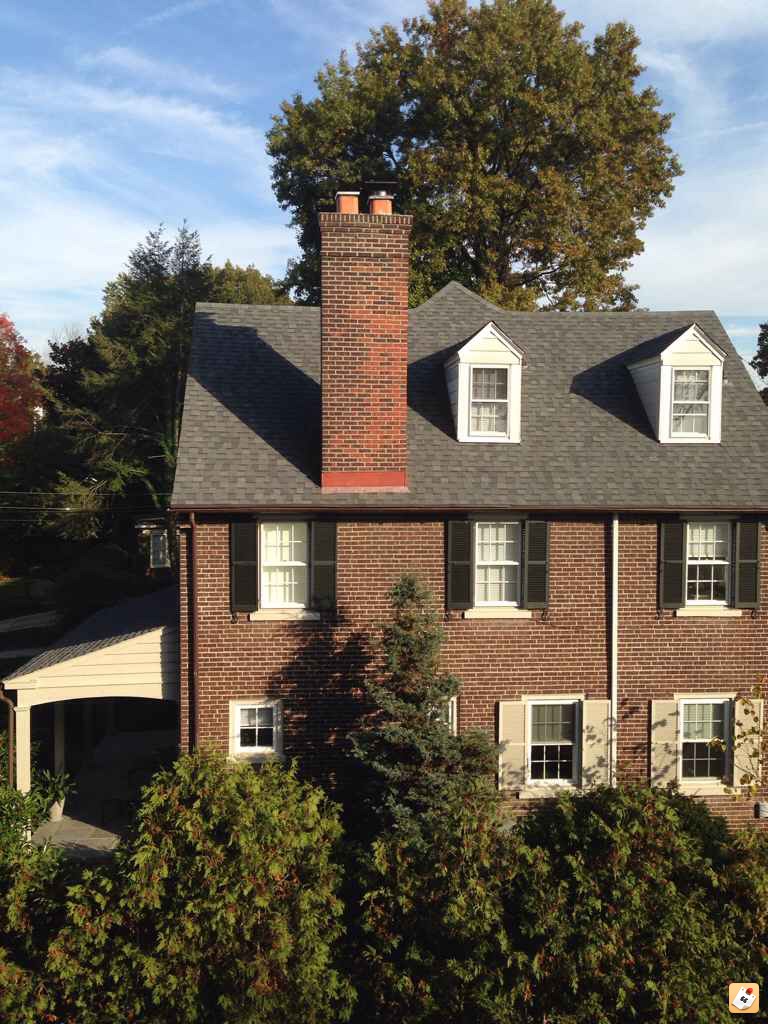I have possibly burnt about four cords of wood in my slammer install of my ~1980 Vermont Stove Company - Shelburne non-cat stove. Maybe more. I know you aren't supposed to do slammer installs, but I guess I decided to live on the edge.
My chimney is approximately 40 feet tall, masonry with 13x13" clay liner, and on the side of the house, but only exposed externally for very small sections. I would be tempted to call it an internal chimney.
Well, here's the video of me laying in the fireplace and looking past the ~4" damper (removed). There is a coating of a few mm just about everywhere in the chimney.
Does anyone have any suggestions for good types of chimney brushes for this setup? My smoke shelf appears to be angled until it gets to the clay liner that is a straight shot to the top of the stack.
My chimney is approximately 40 feet tall, masonry with 13x13" clay liner, and on the side of the house, but only exposed externally for very small sections. I would be tempted to call it an internal chimney.
Well, here's the video of me laying in the fireplace and looking past the ~4" damper (removed). There is a coating of a few mm just about everywhere in the chimney.
Does anyone have any suggestions for good types of chimney brushes for this setup? My smoke shelf appears to be angled until it gets to the clay liner that is a straight shot to the top of the stack.



